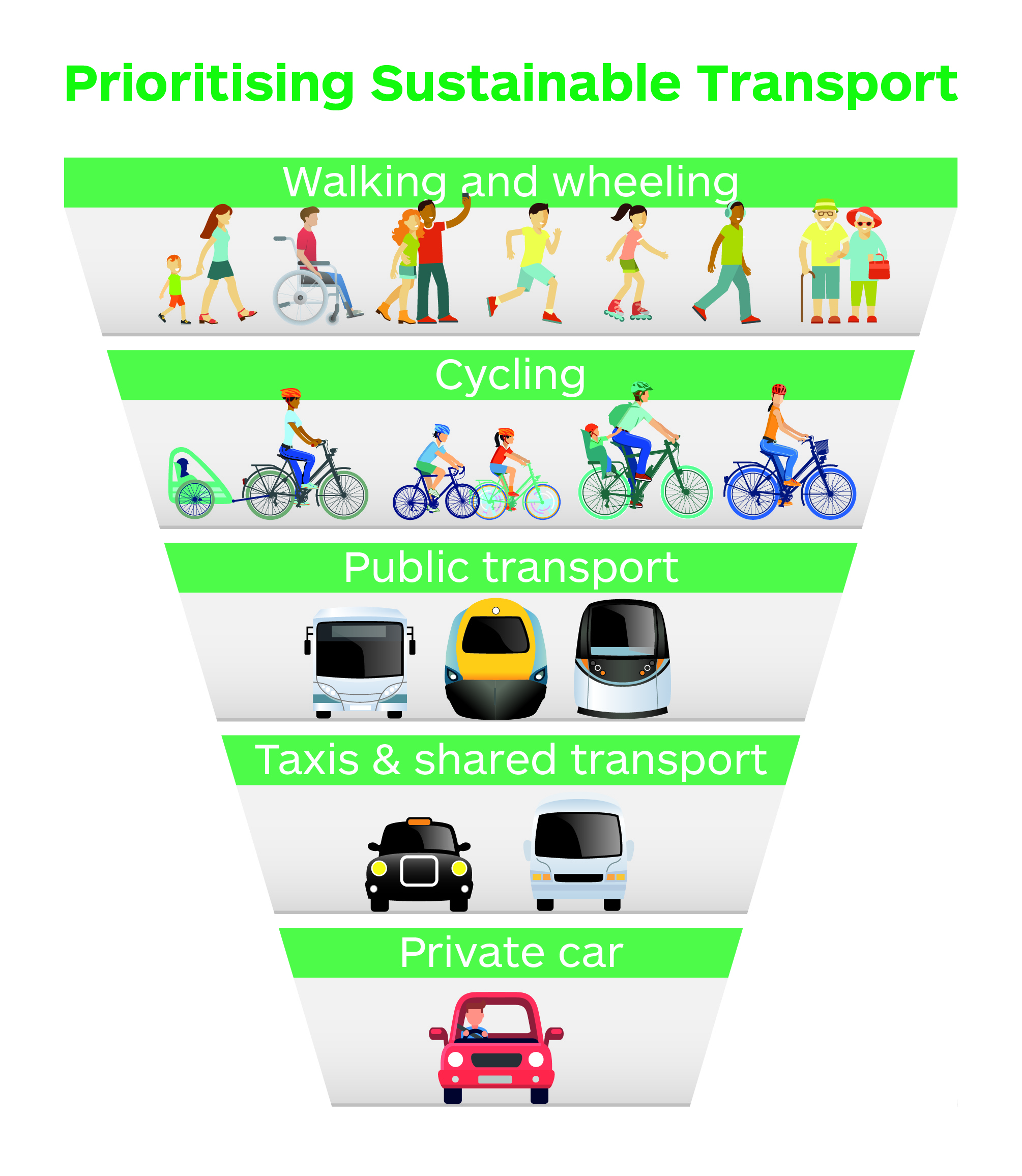Green Your Commute: Sustainable Transportation Tips for a Healthier Planet and Happier You
Our daily commutes represent a significant chunk of our carbon footprint. But what if we could transform this unavoidable necessity into an opportunity for positive change? Embracing sustainable transportation isn’t just about saving the planet; it’s about reclaiming our time, improving our health, and fostering a more vibrant community. This comprehensive guide will equip you with creative and practical tips to green your commute, one journey at a time.
Beyond the Car: Exploring Sustainable Alternatives
The ubiquitous car, while convenient, is a major contributor to greenhouse gas emissions and traffic congestion. Fortunately, a plethora of greener options exist, each with its own unique charm and advantages.
1. Pedal Power: The Joy of Cycling
Cycling isn’t just for weekend warriors. With dedicated bike lanes becoming increasingly common and e-bikes offering an extra boost, commuting by bicycle is more accessible than ever. Imagine the invigorating start to your day, the fresh air filling your lungs, and the satisfying sense of accomplishment. Plus, you’ll be contributing to a healthier you and a healthier planet!
2. Public Transportation: The Social Commute
Buses, trains, and trams offer a convenient and surprisingly efficient way to travel, especially in urban areas. Embrace the opportunity to read a book, catch up on emails, or simply observe the city unfold before you. Public transport reduces traffic congestion and offers a chance to connect with your community.
3. Walking: The Mindful Commute
For shorter commutes, walking offers an unparalleled opportunity for mindfulness and stress reduction. The rhythmic movement, the sights and sounds of your neighbourhood – walking transforms your commute into a meditative experience. And the health benefits are undeniable!
4. Carpooling/Ride-Sharing: The Collaborative Commute
Team up with colleagues or neighbours to share rides. Carpooling significantly reduces the number of vehicles on the road, lowering emissions and easing traffic congestion. Ride-sharing apps provide a convenient platform to connect with others travelling along similar routes.
5. Telecommuting/Remote Work: The Ultimate Green Commute
The ultimate sustainable commute? Working from home! Eliminate your commute altogether and save time, money, and reduce your environmental impact. Discuss flexible work arrangements with your employer – you might be surprised at the possibilities.
Optimizing Your Commute: Tips for Every Traveler
Regardless of your chosen mode of transportation, here are some practical tips to further minimize your environmental impact:
- Plan your route efficiently: Utilize navigation apps to find the shortest, most efficient route, minimizing fuel consumption and travel time.
- Combine modes of transport: Use a combination of public transport, cycling, and walking to optimize your journey.
- Maintain your vehicle: Properly maintained vehicles are more fuel-efficient, reducing emissions.
- Choose fuel-efficient vehicles: If driving is unavoidable, opt for fuel-efficient vehicles or consider hybrid or electric options.
- Reduce your baggage: Carrying less weight reduces the energy required for your commute.
Table: Comparing Sustainable Commute Options
| Transportation Method | Environmental Impact | Cost | Time | Health Benefits |
|---|---|---|---|---|
| Cycling | Low | Low | Moderate | High |
| Public Transport | Moderate | Moderate | Moderate | Moderate |
| Walking | Very Low | Very Low | High | High |
| Carpooling | Moderate | Moderate | Moderate | Moderate |
| Telecommuting | Very Low | Low | High | Moderate |
Embrace the Change: A Greener Commute, a Better Future
Green your commute and experience the multifaceted benefits: reduced environmental impact, improved physical and mental health, and increased community engagement. Start small, experiment with different options, and find what works best for you. Every step you take, no matter how small, contributes to a healthier planet and a more sustainable future. Join the movement towards a greener commute – your planet and your well-being will thank you for it.

Additional Information
Green Your Commute: Sustainable Transportation Tips – A Detailed Analysis
Reducing the environmental impact of our commutes is crucial for mitigating climate change and improving air quality. “Green Your Commute” encompasses a range of strategies aimed at minimizing the carbon footprint associated with traveling to and from work or other destinations. Let’s delve deeper into the various aspects:
I. Understanding the Environmental Impact of Traditional Commuting:
- Fossil Fuel Dependence: The majority of commutes rely on cars powered by gasoline or diesel, significant contributors to greenhouse gas emissions (GHGs), including carbon dioxide (CO2), methane (CH4), and nitrous oxide (N2O). These gases trap heat in the atmosphere, leading to global warming.
- Air Pollution: Combustion engines release harmful pollutants like particulate matter (PM), nitrogen oxides (NOx), and ground-level ozone, impacting respiratory health and contributing to smog.
- Congestion and Inefficiency: Traffic congestion wastes fuel, increases emissions, and adds to stress levels.
- Land Use: Extensive road networks consume land, fragment habitats, and contribute to urban sprawl.
II. Sustainable Transportation Alternatives:
A. Public Transportation:
- Buses: Relatively inexpensive and widely available, especially in urban areas. Electric buses are becoming increasingly common, further reducing emissions.
- Trains (Light Rail, Commuter Rail, Subway): Generally more efficient than buses, carrying larger numbers of passengers and often utilizing dedicated right-of-way, reducing congestion. Electric or hybrid trains further enhance sustainability.
- Ferries: A viable option for coastal cities and areas with water bodies, particularly if powered by electricity or alternative fuels.
B. Active Transportation:
- Cycling: A low-impact, healthy, and efficient option for shorter commutes. Electric bikes can extend the range and accessibility of cycling.
- Walking: Excellent for short distances, promoting physical health and reducing reliance on motorized transport.
C. Alternative Vehicles:
- Electric Vehicles (EVs): Produce zero tailpipe emissions, although the electricity used to charge them must be considered. The environmental benefit depends on the source of electricity generation (renewable vs. fossil fuels).
- Hybrid Vehicles: Combine gasoline engines with electric motors, improving fuel efficiency and reducing emissions compared to traditional gasoline cars.
- Plug-in Hybrid Electric Vehicles (PHEVs): Offer a balance between electric and gasoline power, providing longer electric-only range than standard hybrids.
- Fuel-Cell Vehicles (FCVs): Use hydrogen fuel cells to generate electricity, producing only water vapor as exhaust. However, hydrogen production and distribution remain challenging.
- Biofuel Vehicles: Utilize biofuels derived from renewable sources like plants, potentially reducing reliance on fossil fuels but with potential land use and food security concerns.
D. Shared Mobility:
- Ride-sharing (Carpooling): Reduces the number of vehicles on the road, decreasing congestion and emissions.
- Ride-hailing services (with sustainable options): Some services are exploring electric vehicle fleets and carbon offsetting programs. However, the overall impact depends on the efficiency of the service and vehicle type.
- Bike-sharing programs: Provide convenient access to bicycles for short trips.
III. Optimizing Commuting for Sustainability:
- Route Planning: Choose routes that minimize distance and congestion. Use navigation apps that factor in traffic and suggest eco-friendly routes.
- Vehicle Maintenance: Regular maintenance ensures optimal fuel efficiency and reduces emissions. Proper tire inflation, for example, significantly impacts fuel consumption.
- Telecommuting/Remote Work: Reduces commuting altogether, significantly impacting emissions and traffic congestion.
- Consolidation of Trips: Combine errands to reduce the number of individual journeys.
- Carbon Offsetting: Invest in projects that reduce greenhouse gas emissions to compensate for unavoidable emissions from commuting. However, this should be considered supplementary to reducing emissions directly.
IV. Policy and Infrastructure Considerations:
- Investment in Public Transportation: Expanding and improving public transport infrastructure is crucial for attracting commuters and reducing reliance on private vehicles.
- Bicycle and Pedestrian Infrastructure: Creating safe and dedicated cycling and walking lanes encourages active transportation.
- Incentives for Sustainable Transportation: Governments can incentivize sustainable choices through tax breaks, subsidies, and congestion pricing.
- Emission Standards: Stricter emission standards for vehicles can drive innovation and reduce pollution.
- Urban Planning: Promote mixed-use development, reducing the need for long commutes.
V. Conclusion:
Green Your Commute is not a singular solution but a multifaceted approach requiring individual actions and policy support. By adopting a combination of sustainable transportation modes and optimizing our commuting habits, we can significantly reduce our environmental impact and contribute to a healthier, more sustainable future. The optimal strategy depends on individual circumstances, but a shift towards less carbon-intensive options is crucial for mitigating the environmental consequences of daily travel.

